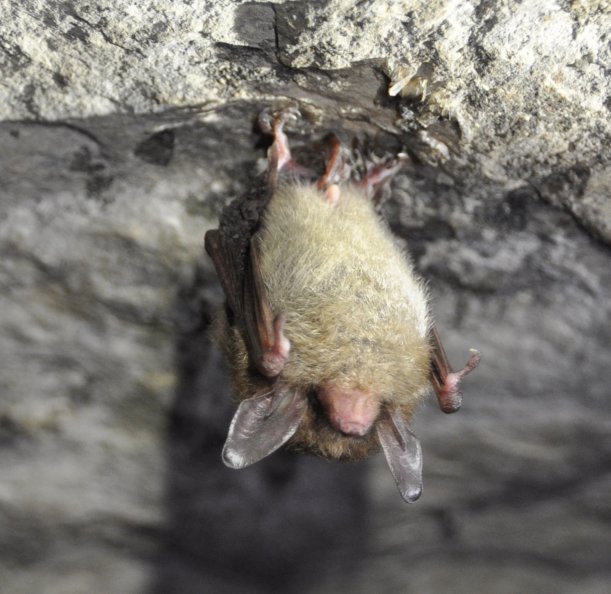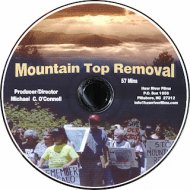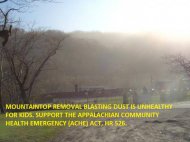
Court: Northern Long-eared Bat Was Unlawfully Denied Endangered Species Protection
Jan 29, 2020
Decimated by Disease, Bat Population Has Declined More Than 90% WASHINGTON— A federal judge on Tuesday overturned a decision by the U.S. Fish and Wildlife Service to protect northern long-eared bats as threatened rather than endangered under the Endangered Species Act.
WASHINGTON— A federal judge on Tuesday overturned a decision by the U.S. Fish and Wildlife Service to protect northern long-eared bats as threatened rather than endangered under the Endangered Species Act.
When the bat is ultimately listed as an endangered species, it will gain critical protections it was long denied as a threatened species. Once common in the northeastern and mid-Atlantic states as well as in eastern Canada, the species has suffered up to 99% declines in this core range and is now found only in patches across 37 states and all of Canada.
The Center for Biological Diversity, Defenders of Wildlife, Sierra Club, Coal River Mountain Watch and Ohio Valley Environmental Coalition challenged the threatened listing in 2015.
“We’re thrilled these beleaguered bats will finally get the protection they need,” said Ryan Shannon, an attorney at the Center for Biological Diversity. “This ruling recognizes that we need to do everything we can to save these imperiled animals from the brink of extinction.”
The bat was listed as threatened despite the fact that it has declined in its core range by over 90% since 2006, when the fungal disease known as white-nose syndrome began killing hibernating bats by the millions. In rejecting the agency’s decision, the judge found that the Service had failed to explain why the species was not endangered after suffering catastrophic declines as a result of white-nose syndrome. The judge also found the Service failed to consider the cumulative effects of habitat destruction against that grim backdrop.
“This is a huge win for the northern long-eared bat, the bat species hit hardest by white-nose syndrome,” said Jane Davenport, a senior attorney at Defenders of Wildlife. “Scientists are racing the clock to develop and test interventions to protect bats from white-nose syndrome, and the Service must act immediately and definitively to protect the remaining population before the clock runs out for good.”
Under the overturned threatened listing, the Service used a so-called “4(d) rule” to allow nearly all habitat-destroying activities. The Service argued that since the species was primarily threatened by disease, there was no need to protect its habitat.
But the court rightly noted that, in combination with disease, habitat destruction and other threats can cumulatively affect the bats, and thus are cause for concern. The threatened listing and 4(d) rule will stay in place while the agency goes back to the drawing board, but once the species is listed as endangered, no such rule will be allowed.
“The science is clear that the northern long-eared bat is endangered and deserves to be protected as such. In the face of the extinction crisis, it's vitally important that the protections of the Endangered Species Act be implemented faithfully, not circumvented due to political pressure,” said Sierra Club staff attorney Karimah Schoenhut.
The judge also rejected a Service policy that allowed it to ignore the science on the bat’s catastrophic declines in its core range in reaching its decision to list as threatened. This policy was a key part of the Service’s denial of the bat’s endangered status and allowed it to deny the bat the stringent legal protection the Endangered Species Act requires.
“Coal River Mountain is home to both the northern long-eared bat and the endangered Indiana bat,” said Vernon Haltom of Coal River Mountain Watch. “While both species benefit their human neighbors by keeping disease-carrying mosquitoes in check, mountaintop removal continues to destroy their home, practically unchecked. We hope this ruling will be a step toward protecting bats from mountaintop removal, as well as protecting human communities’ health from this deadly practice.”
Northern long-eared bats are associated with mature, interior forest environments. Unlike most other bats, they forage along wooded hillsides and ridgelines — not above valley-bottom streams and along the edges of riparian forests. The species is also much more solitary in its roosting and hibernating habits than other bats, preferring to hide in tight crevices and holes instead of hanging out in open areas within caves. Because it prefers the darkest, coldest parts of caves and enters hibernation earlier and leaves it later than other hibernating bat species, it is extremely vulnerable to white-nose syndrome.
“A good day for the future of this species is a good day for humans, too,” said Vivian Stockman, executive director of the Ohio Valley Environmental Coalition. “With this ruling the FWS must acknowledge that habitat loss — such as that brought on by mountaintop-removal coal mining — is a major threat to this species. This ruling brings us closer to a long-overdue next step: official government acknowledgment that this extreme method of coal mining is also a threat to human health and must be banned.”
The decision is posted at https://www.biologicaldiversity.org/species/mammals/northern_long-eared_bat/pdfs/Northern-Long-eared-Bat-Opinion-and-Order.pdf
The Center for Biological Diversity is a national, nonprofit conservation organization with more than 1.7 million members and online activists dedicated to the protection of endangered species and wild places. www.biologicaldiversity.org
Defenders of Wildlife is dedicated to the protection of all native animals and plants in their natural communities. With over 1.8 million members and activists, Defenders of Wildlife is a leading advocate for innovative solutions to safeguard our wildlife heritage for generations to come. For more information, visit Defenders.org/newsroom and follow us on Twitter @Defenders.
The Sierra Club is America’s largest and most influential grassroots environmental organization, with more than 3.8 million members and supporters. In addition to protecting every person's right to get outdoors and access the healing power of nature, the Sierra Club works to promote clean energy, safeguard the health of our communities, protect wildlife, and preserve our remaining wild places through grassroots activism, public education, lobbying, and legal action. For more information, visit www.sierraclub.org.
Coal River Mountain Watch is a West Virginia nonprofit organization that works to stop the destruction of communities and environment by mountaintop removal mining, to improve the quality of life of residents, and to help rebuild sustainable communities.
The Ohio Valley Environmental Coalition is dedicated to the improvement of the environment and communities through education, grassroots organizing and coalition building, leadership development, strategic litigation and media outreach.













